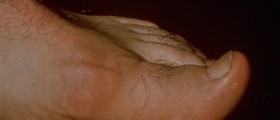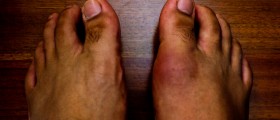Information on Gout
Gout is actually a certain type of arthritis and it occurs rather frequently, once in every 100 persons. The rate of this medical condition is constantly increasing everywhere around the world, mostly due to the factors such as the process of aging, hyperuricemia, greater use of medications, dietary changes and lifestyle changes. Gout is commonly associated with the aforementioned medical condition called hyperuricemia which is characterized by excessively high amounts of uric acid in the blood. Two different types of purines get metabolized in the human body, and they break down into uric acid. Uric acid is not always easy to break down, so it may build up in the human body. Large concentrations of uric acid in the blood lead to the formation of needle like crystals of certain types of salts which are associated with gout and its typical symptoms, which are painful sensations and inflammatory conditions.
Different Stages of Gout
A gout attack may occur very quickly and it usually affects the lower limbs. Monoarticular gout affects only one joint while the polyarticular gout affects multiple joints. The symptoms of the condition are usually defined by one of four stages of the actual disease. The stages include asymptomatic hyperuricemia, acute gouty arthritis, intercritical gout and chronic tophaceous gout. The first stage of gout is called asymptomatic hyperuricemia. At this stage of the disease the sufferer cannot notice any symptoms. This stage of the disease does not have to lead to the development of full blown gout. Intercritical gout is actually a term which is used mainly to describe the periods which occur between gout attacks.
The second stage is called acute gouty arthritis. This medical condition commonly affects men more than women and it is characterized by symptoms such as severe painful conditions at the affected joints, crushing sensations in the bones, daily actions difficult to perform, loss of appetite, mild fever, chills and swelling. This condition usually occurs as the first symptoms of gout. It commonly affects only one joint in its beginning stages. The last stage of the disease is called chronic tophaceous gout and it occurs only after a few years of persistent gout. The harmful crystals can get formed in the joints but also in the bones and cartilage and several other locations in the human body. The symptoms of this medical condition usually include swelling, stiffness, redness, painful sensations and inflammatory conditions at the affected areas of the body.





-Symptoms,-Diagnosis,-Treatment_f_280x120.jpg)











Your thoughts on this
Loading...